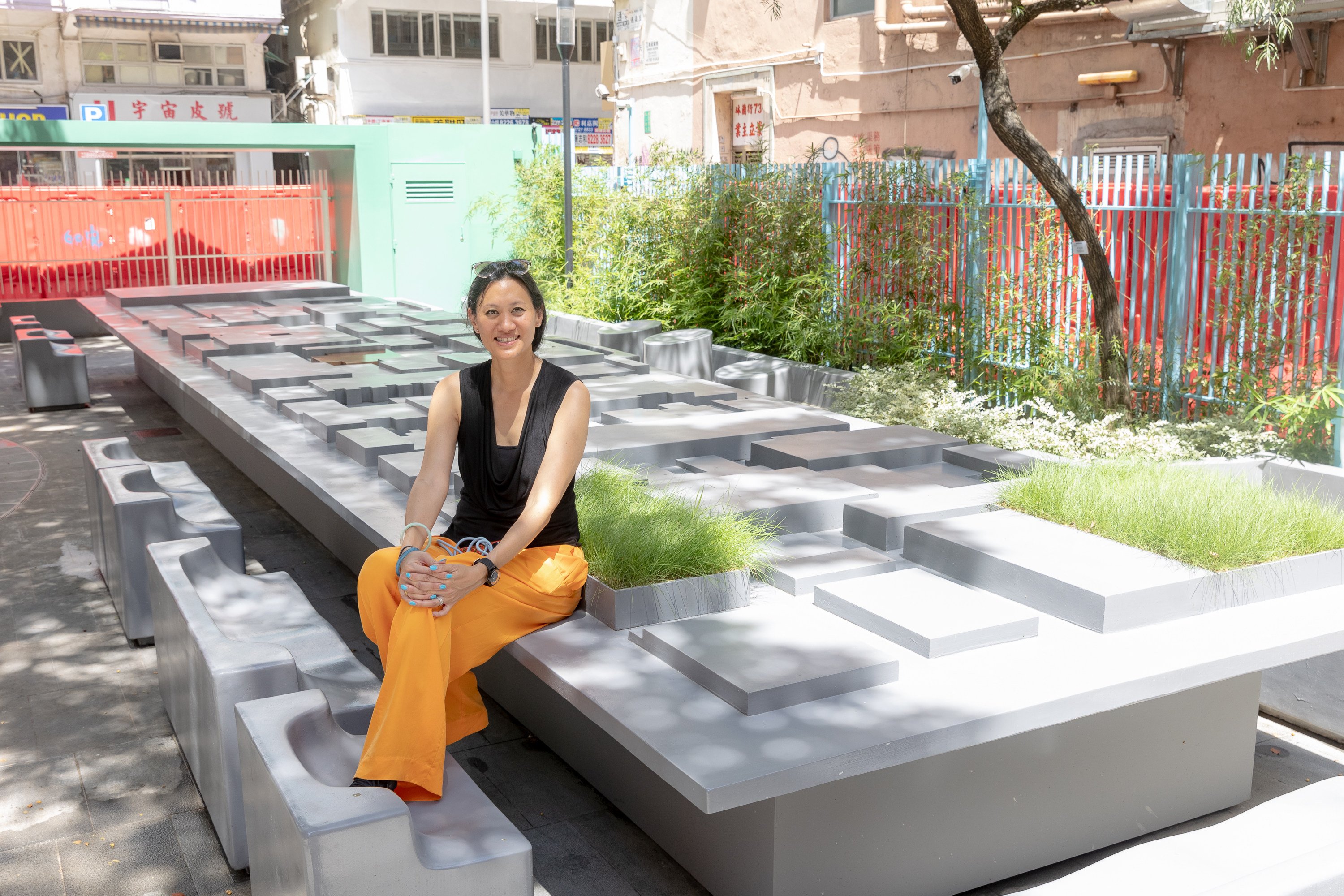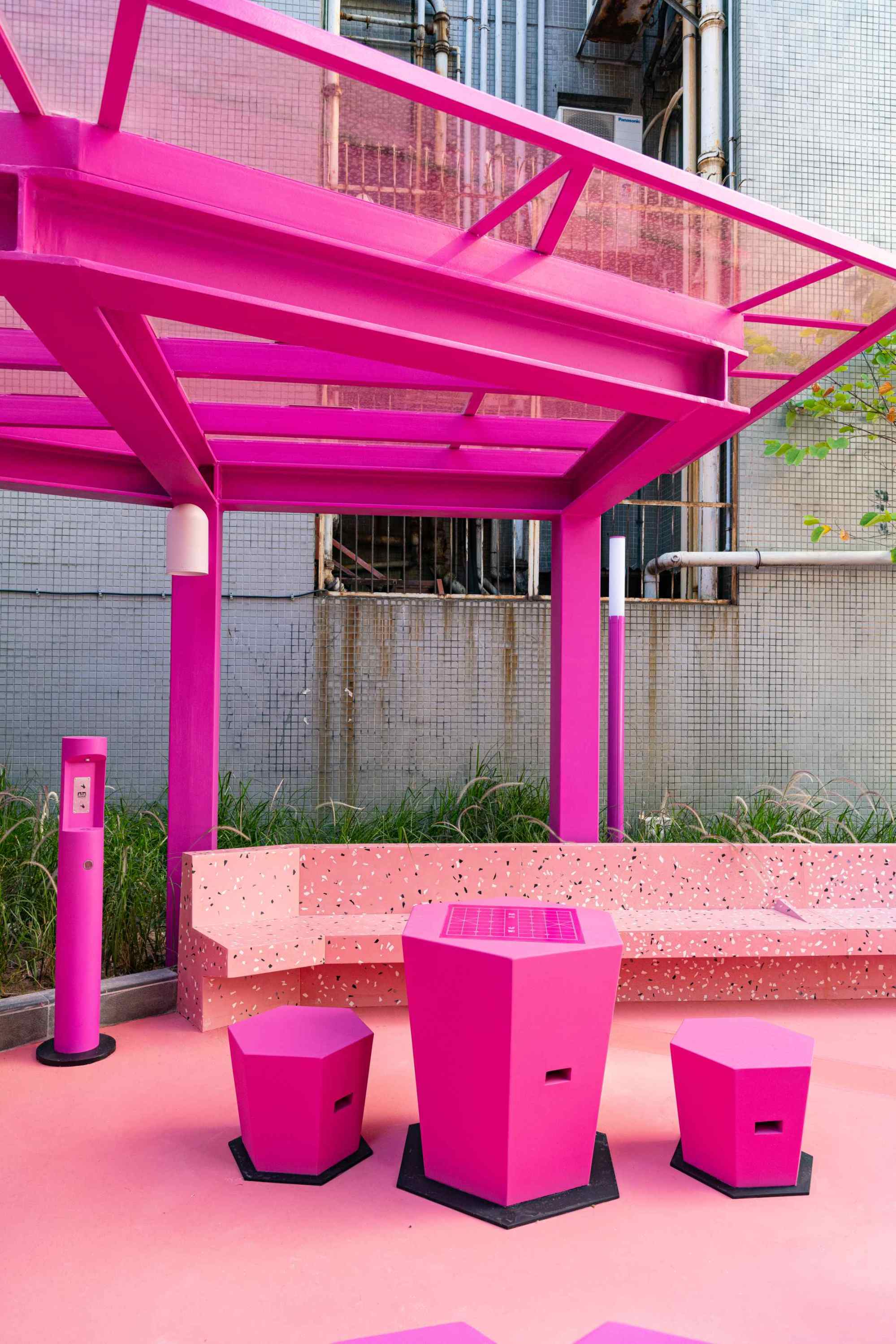
- Design Trust Futures Studio has dotted micro-parks across Hong Kong with one goal in mind: creating communities. We meet Marisa Yiu, its tireless champion
One September evening in 2019, Marisa Yiu Kar-san, co-founder and executive director of Design Trust, opened an exhibition at Haw Par Mansion in Tai Hang on Hong Kong Island.
“Heritage is Innovation” was an initiative of Design Trust Futures Studio (DTFS), a flagship programme she’d established in 2017 to bring together experienced designers and newer talents.
Yiu was at the heart of the project. Her fingernails that autumn night in 2019 were painted the same neon green as the brochure.

When she remarked, on a tour of the grade-one-listed historic building, “There are always unexpected moments,” she was referring to the objects (textiles with acoustic possibilities, scent diffusers, movable sculptures, a heat-sensitive carpet of many colours) tucked into the mansion’s corners.
‘A very strange sense of home’ in Amsterdam-based Hong Kong artist’s show
Four years, one socially distanced pandemic and many unexpected moments later, Haw Par is no longer a music school, Hong Kong society has endured a major shift and Yiu is still positive that design can bring communities together in public spaces.
Today, her neon-orange fingernails are turning the proof pages of a publication called Design Trust Futures Studio: from Smallness, Playfulness to Community Impact. You could warm your own hands on her enthusiasm.
On that long-ago Haw Par evening, she described the very outfit she wore as “conceptual”. Reminded of this, she gives a good-humoured eye roll. These days, she agrees, she has slightly dialled down the academic jargon.

“I’m trying to simplify my delivery …” Did anyone suggest that? “No! Maybe it’s exhaustion.” Then she adds – quickly, in case she sounds like a whinger, emphatically not her style – “I’m just kidding.”
The book, launched in November (“It’s the first time we’ve had an ISBN [International Standard Book Number] for our own books – isn’t that crazy?”), expands on a DTFS project from 2018, “Play is for the people”.
The idea was to reinvigorate Hong Kong public areas into micro-parks and grew out of a 2017 DTFS project called “Small is meaningful”.
“At the time, there was a lot of urgency about micro-living, pressure of space,” says Yiu. “If apartments are getting smaller, what do we think about public space?”

The theory was that, given the tininess of most interiors, areas outside could become people’s living rooms.
Retrospectively, those titles can induce a wince. “I wanted to find something everyone could connect to so that’s why the abstraction of ‘small is meaningful’ is a debate and a question,” she says.
Getting the government to do something about cramped interiors wasn’t on the agenda but the DTFS exhibition of prototype micro-parks did give the authorities a nudge.
After 9/11, whole neighbourhoods shut down; it really made me feel how fragile communities areMarisa Yiu Kar-san
“By the end of 2017, different parties had come to the show and said, ‘How can we work together?’” Eventually, the Leisure and Cultural Services Department, the Architectural Services Department and the [now disbanded] Policy Innovation and Coordination Office became involved. “This book will present the process in a very intimate, personal way.”
Yiu, who loves flow charts and Excel and describes herself as a “very layered, multi-agenda-ed individual”, has included a double-page spread, under the heading Organisational Analysis, of the number of coordination meetings, workshops, district council presentations and on-site construction meetings it took to create each micro-park.
An exhausting tide of names and acronyms ripples out from the central lead curator: Yiu.

She was also a competitive tennis player. She began at eight and, as a junior, played for Hong Kong, travelling around Asian tournaments. “I play it back in my mind and think, ‘Oh my God, maybe that informed my love for cross-cultural projects.’”
Was she good about defeat? “Not really. But we learned to pick ourselves up fast. Tennis is beautiful. It’s courteous. You lose but you still shake hands. The resilience is good training.”
Hong Kong urban walks reveal sides of the city you’ve never seen before
By her mid-teens, she’d burned out. “I was missing a social life and school, I knew I wanted to focus on lessons.” Unlike most of her classmates, who took the British university route, she applied to do a liberal arts degree at Columbia in New York.
She’d chosen the US because she loved the arts and fashion and could defer selecting her major for two years. (She also played tennis on the varsity team for a year. “It was a little bit manic while I was partying …”)

When the moment came, she opted for architecture and went on to do a master’s degree in it at Princeton but has never abandoned those initial loves. Her thesis, for example, explored the global assembly lines of the garment industry.
“It was all about how communities are shaped. My parents had friends with factories in China, and I was researching and mapping factories – about 500 – in New York’s Chinatown. After 9/11, whole neighbourhoods shut down; it really made me feel how fragile communities are.”
That same year – 2001 – she met Eric Schuldenfrei, then a visiting architecture lecturer at Princeton and now head of the Department of Architecture at the University of Hong Kong.

Yiu worked for four years at the New York architecture firm Kohn Pedersen Fox until 2005, when she and Schuldenfrei combined their names and talent to set up an architectural practice called ESKYIU, deliberately pronounced “askew” to emphasise an unexpected approach.
When Yiu became Hong Kong’s chief curator for the 2009 Shenzhen and Hong Kong Bi-City Biennale of Urbanism and Architecture, Schuldenfrei was curator for education, film and media.

“He was pivoting all his focus on academia,” she explains of her husband (they married in 2009 and have twin boys). “And I felt that urgency to knit back a sense of community again through our fellowship programmes, our parks projects.”
Essentially, at DTFS, she’s a fundraiser: she asks for money to support other designers, architects and scholars. She hums a little, a tic she has when she’s processing what sounds like a less-than-perfect situation.
“I didn’t study this,” she agrees. “But I feel there’s a lot of potential generosity and resources. Sometimes it’s matching that ecosystem for the givers to support the makers.”

In response to the obvious question, she cries, “Oh so satisfied – completely! What I really appreciate is this project shows such a positive side of humanity.”
“There was a lot of diplomacy and smiling. Maybe 10 years later we’ll reveal everything,” she says. She’s hesitating. She knows she’s askew, that she’s veering off-message.
“We couldn’t accept the steel frame, it was not what was designed. After many meetings we all agreed, and it was dismantled. We had to show [the installation] is not art, it’s not sculpture – it had function. We had to go to endless meetings to fight for those values.”

She had many of what she calls her overthinking “brain explosions”: should she write a “sweet letter” or should she “throw a fuss”? That early training of discipline and determination prevailed. New engineers were brought in.
“What’s remarkable is – it’s built! Doing this is maddening and fun … but it does keep me up at night.” And she beams.
